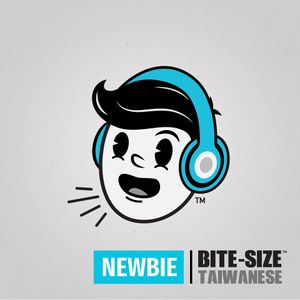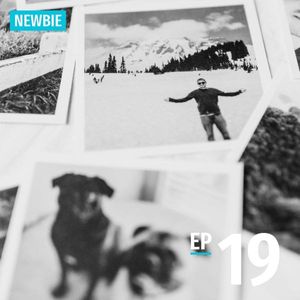
Bite-size Taiwanese | Newbie
Bite-size Taiwanese
Ep19: Who is this? | Tse sī siánn-lâng 這是啥人?

Ep19: Who is this? | Tse sī siánn-lâng 這是啥人?
Description
In this episode, we’ve talked about personal pronouns like “you” and “I”, the “exclusive we” and “inclusive we”, and also how to express possession in Taiwanese.
(These show notes use tables and rich formatting. Please visit the episode webpage for an optimal viewing experience.)
PERSONAL PRONOUNS
| Singular | Plural | |||
| 1st person | guá | I, me | guán / gún | (exclusive) we, us |
| - | - | lán | you and I; (inclusive) we, us | |
| 2nd person | lí | (singular) you | lín | (plural) you |
| 3rd person | i | he/she/it, him/her/it | in | they, them |
- There are two types of “we” in Taiwanese. The “inclusive we” includes whomever the speaker is talking to, whereas the “exclusive we” doesn’t.
- Possessives are formed by adding “ê” to the personal pronouns, e.g. “guá ê” (my, mine), “lí ê” (your, yours), “in ê” (their, theirs).
- The plural pronouns “guán” (we), “lín” (you all), and “in” (they) can also be used like singular possessives, usually when there is a close relationship with the person or place. For example, “guán pîng-iú” can mean “my friend” or “our friend”.
SENTENCES AND VOCABULARY
| TAIWANESE | ENGLISH |
| Tsit ê lâng sī siánn-lâng? | Who is this person? |
| siánn-lâng / siánn-mih-lâng | who (literally: what-person)
Pronunciation note: “siánn-lâng” is often contracted as “siàng-n̂g” or “siáng” in spoken Taiwanese, and sometimes also “siâng” in certain regional dialects. |
| Tse sī siánn-lâng? / Tse sī siánn-mih-lâng? | Who’s this? |
| Tse sī guán a-bú. | This is my mom. |
| He sī guá! | That’s me! |
| I sī siáng? | Who is he/she? |
| In sī guán tông-ha̍k. | They’re my classmates. |
| ko-tiong ê tông-ha̍k | high school classmates |
| lāu-su | teacher |
| ha̍k-sing | student |
| Guán ē iânn. | We (exclusive) are going to win. |
| Lán ē iânn. | We (inclusive) are going to win. |
| I hōo i tsi̍t pún tsheh. | He/she gave him/her a book. |
| ê | (possessive particle)
Grammar note: the function of “ê” is similar to the apostrophe “s” in English. It is also used as a general measure word for people and things, as in “hit ê lâng” (that person) or “nn̄g ê lâng” (two people). |
| Phil ê káu-á | Phil’s dog |
| i ê tshia | his/her car |
| siánn-lâng--ê / siánn-mih-lâng--ê | whose |
| siánn-lâng ê tshia | whose car |
| Tse sī siánn-lâng--ê? | Whose is this? |
| Tse sī guá ê. | This is mine |
| guán pîng-iú | my friend; our friend (exclusive) |
| lán pîng-iú | our friend (inclusive) |
| lín tau | your home |
| in thâu-ke | his/her boss; their boss |
| Lín tsia̍h-pá--buē? | Have you eaten yet?
Usage note: “Tsia̍h-pá--buē?” is a way to greet people in Taiwanese. If you want to know more about the greeting, check out Ep1 of our Elementary Level podcast. |
| Ū-îng tō lâi guán tsia tsē--ooh! | Come visit us if you have time. |
*Syllables that have been greyed out require tone changes.
For more about personal pronouns and possessives, go check out our downloadable workbook! You’ll also find additional vocabulary with characters, pronunciation notes, grammar explanations, culture tips, and fun exercises to help your practice.
NASA GREETINGS TO THE UNIVERSE IN 55 LANGUAGES
In 1977, NASA launched two Voyager space probes that continue to explore our solar system and now even interstellar space. On board, they placed recordings of “greetings to the universe” in 55 different languages, just in case the probes would encounter any extraterrestrial beings.
One of the recorded languages is Amoy, a Southern Min dialect spoken around Xiamen, which is similar to Taiwanese. If you want to learn more about how they decided which languages to use and more background on the whole project, check out the links below:
https://voyager.jpl.nasa.gov/golden-record/whats-on-the-record/greetings/
https://en.wikipedia.org/wiki/Contents_of_the_Voyager_Golden_Record
Music Credit: TeknoAXE